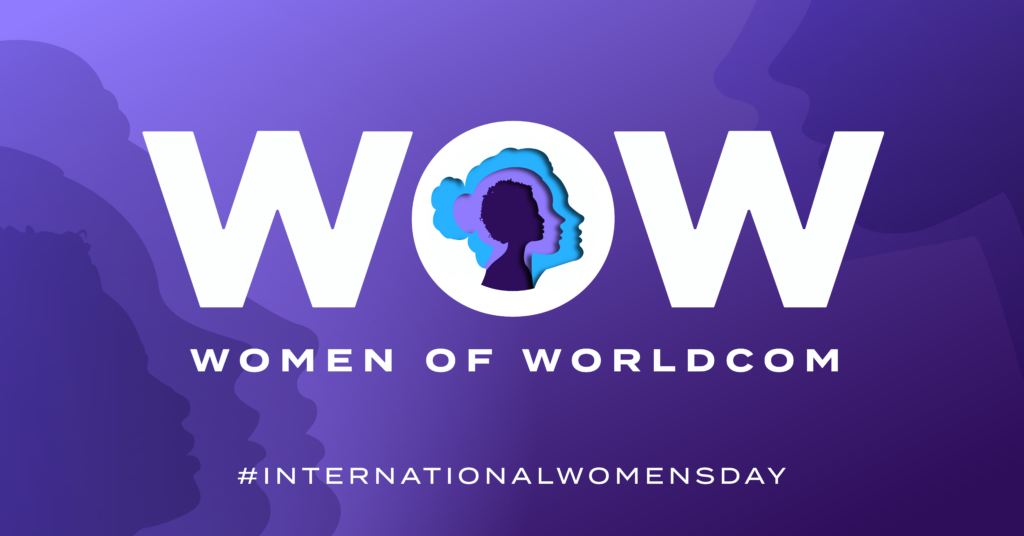International Women’s Day can be seen as a once-a-year event or the trigger to demonstrate the expert capability of women all over the world. At Worldcom Public Relations Group we see it as the latter and asked our expert partners to provide their thoughts and advice on five topics that are at the top of the Worldcom Confidence Index in terms of engagement by over 85,000 CEOs and CMOs from around the globe.
In this first post of a five post series, the Women of Worldcom comment on the increasingly important issue of polarization and what it means to organizations of all types.
Focus on messaging that fosters unity, understanding, and cooperation across ideological divides
By Jenn Lewis, Vice President, Pollack Group, Los Angeles USA
Navigating polarization from a communications perspective requires a delicate balance of empathy and strategic messaging and starts with the most important action a leader can take: listening. Take the time to actively listen to diverse perspectives and understand the concerns and opinions of different stakeholders, even those with opposing views.
Open minds often identify common ground and shared values with others that can serve as a basis for constructive dialogue and collaboration. It’s important to ensure no one feels left out due to their views, so leaders should use inclusive language in communication that avoids exacerbating divisions and polarization. Instead, they should focus on messaging that fosters unity, understanding, and cooperation across ideological divides.
Organizations should provide empathy-building activities for staff to help them communicate with colleagues and customers
By Cathy Clarkin, Chief Financial Officer, Coyne PR, New Jersey, USA
Navigating polarization requires thoughtful strategies aimed at understanding, respect, and collaboration. We should encourage respectful dialogue and constructive feedback to resolve conflicts. We also need to emphasize diversity and inclusion by respecting all perspectives. Organizations should provide empathy-building activities for staff to help them communicate with colleagues and customers.
Purpose-led communications, based in truth will make a real impact
By Susie Horgan, Founder and Managing Director, Springboard Communications, Cork, Ireland
Polarised political opinions continue to dominate conversations, with rifts in our political and cultural landscapes deepening. Amidst this tumultuous backdrop, communicators face a daunting challenge.
Indifference poses a huge threat to brands as they risk fading into insignificance if they fail to evoke any response — positive or negative — from their audience. Purpose-led communications, based in truth will make a real impact.
There is an opportunity for brands to stand out. By taking a stand and communicating their true values to the right audience, brands can establish genuine connections.
When facing a polarizing communications challenge, the most powerful thing we can do is find common ground
By Angela Leon, Senior Vice President, Airfoil Group, Michigan, USA
When facing a polarizing communications challenge, the most powerful thing we can do is find common ground. Well-designed research at the start of any campaign will help us better understand the landscape, consider all our stakeholders and what is driving their beliefs and actions. Despite how polarized our communities have become, we still have much in common – when our work unearths these commonalities, we have something powerful to build from.
Once we unlock this common ground, it can become the litmus test for all our communications decisions. It will keep our strategy and messaging centered at the start of our planning. It will become the guiding principle for executives when facing the toughest questions. It can be the final measure of a program when it’s time to reflect on its impact.
At the same time, we also need to become more comfortable with disagreement. As communications advisors, it’s our responsibility to anticipate all possible reactions and ensure our organizations are aligned on how we will face them. Ultimately, the most successful brands are those who are prepared to stand behind their word and their actions when it matters most.
Use shared values as a connection point for relationship building
By Teresa Siles, President and Partner, Nuffer, Smith, Tucker, San Diego, USA
Through our trends tracking process, we’ve long been following important societal shifts that alter the communication landscape. Several years ago, our team identified ‘the polarization of everything’ as something worth paying attention to and unfortunately, that polarization is often coupled with a decline in civility not seen in recent decades. While there is no secret formula to succeeding in this environment, those that do often use shared values as a connection point for relationship building.
Stand for bringing people together in an increasingly divided world
By Emily Greifeld, Vice President, The Pollack Group, New York, USA
In an era where polarization threatens the very fabric of our society, our commitment to bridging divides has never been more crucial. Recent research underscores a steady rise in ideological divides, making clear that navigating this landscape requires more than mere messaging – it demands a strategy rooted in empathy, inclusivity, and the relentless pursuit of common ground. Our approach is to actively listen, engage in meaningful dialogue, and highlight shared values that transcend differences. By doing so, we not only address polarization but also forge a path towards unity, demonstrating that our brand stands for more than products or services – we stand for bringing people together in an increasingly divided world.
Can we help?
If you would like help from any of the experts featured in this post, please contact them via individual agency pages or via their LinkedIn profiles. For any of our other experts please contact Todd Lynch or visit our offices page.
And, if you’d like to keep your communications strategy ahead of the curve, see what over 100,000 C Suite executives around the world are thinking by visiting our Worldcom Confidence Index global tracker which is updated monthly.






